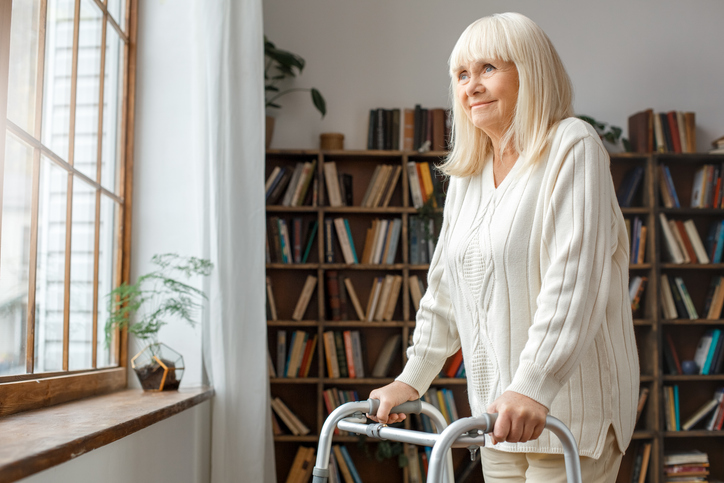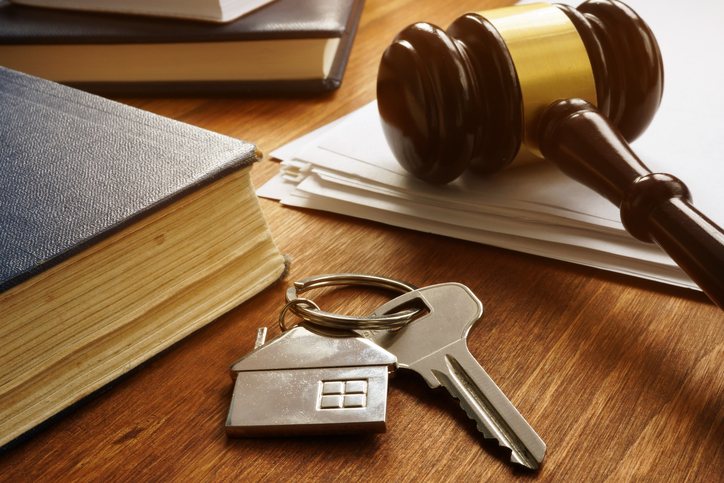
If homeowners plan on aging in place, it’s important to make home modifications that will keep them safe as they do so. It’s best to make these changes ahead of time so they’re ready when they’re needed.
Things like a walk-in shower, handrails and entryway ramps may immediately come to mind, but there are other changes that can make a big difference in the safety of an older homeowner. Here are nine home modifications for homeowners planning to age in place.
1. Add More Lighting
A well-lit home can help prevent falls for seniors with impaired vision. Lighting should be plentiful and overhead, especially in well-traveled areas such as hallways. Motion sensor lights also increase ease and accessibility.
2. Create High Color Contrast
A high color contrast palette throughout the home will help improve visibility. Consider contrasting colors for different surfaces such as the walls, floors and trim to help older homeowners distinguish rooms and navigate easily.
3. Rearrange Furniture
A more open floor plan with wider paths between furniture will help decrease bumps and falls and increase ease of mobility. Furniture with smooth, rounded edges is also safer for older homeowners.
4. Replace Cabinet and Door Handles
Aging homeowners often experience decreasing strength and dexterity. Larger, D-shaped handles allow for a better, easier grip than smaller knobs and twist handles.
5. Upgrade Faucets
Likewise, a single-lever or touch faucet requires less strength and dexterity than twist knobs. This applies to both sinks and showers. Anti-scald locks also prevent water from getting too hot.
6. Change Flooring
For those willing to invest more in aging in place, a change of flooring can increase accessibility. Carpet should be low-pile to avoid tripping, and hardwood floors should be smooth and ideally anti-glare. Flooring such as cushioned vinyl and cork are good options as well to soften falls.
7. Add More Seating
Senior homeowners may need to take more breaks when walking throughout their homes. If space allows, consider placing extra seating in hallways and at the tops/bottoms of stairs.
8. Make Doorbells and Alarms More Accessible
Doorbells and alarms (such as smoke and carbon monoxide detectors) that are louder and include a visual aspect can more easily alert older homeowners with impaired hearing, increasing safety.
9. Widen Doorways
For senior homeowners who use or may eventually use canes, walkers and wheelchairs, it’s a good idea to widen doorways ahead of time. Many homes’ doorways do not meet the Americans with Disabilities Act accessibility standard of 32 inches.
Topics
Member Discussion
Recent Articles
-
Seller’s Property Disclosure: From the Buyer’s Side
- May 9, 2025
- 4 min. read
A lot of education about the Seller’s Disclosure Law is about a seller’s responsibilities. But what are some things that buyers (and their agents) should be taking into consideration when reviewing the Seller’s Property Disclosure Statement?
-
1 in 3 Underestimate Energy Upgrade Costs
- May 8, 2025
- 2 min. read
Despite the cost of energy-efficient upgrades, 90% of those surveyed said they didn’t regret their decision to make them.
-
Home Insurance Rates Rose for 2 in 3 Policyholders in 2024
- May 7, 2025
- 2 min. read
From 2023 to 2024, the majority (35%) said their home insurance rates increased by 5.0% to 9.9%. A considerable 21% said their rates rose 10.0% to 19.9%.
Daily Emails
You’ll be the first to know about real estate trends and various legal happenings. Stay up-to-date by subscribing to JustListed.



